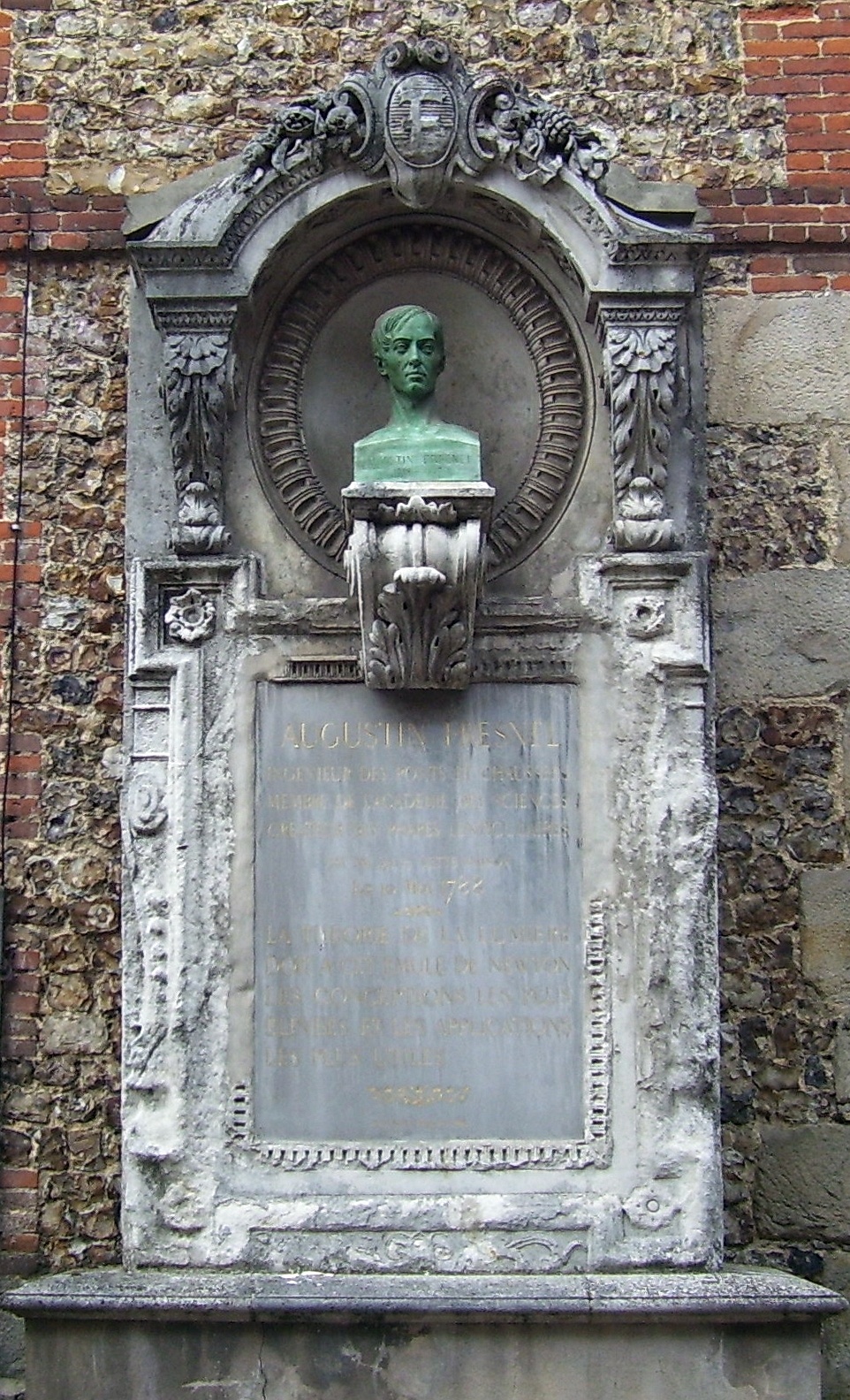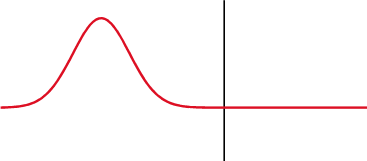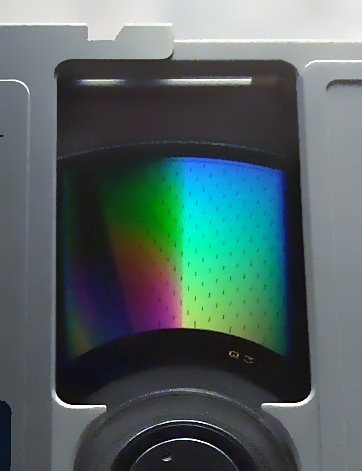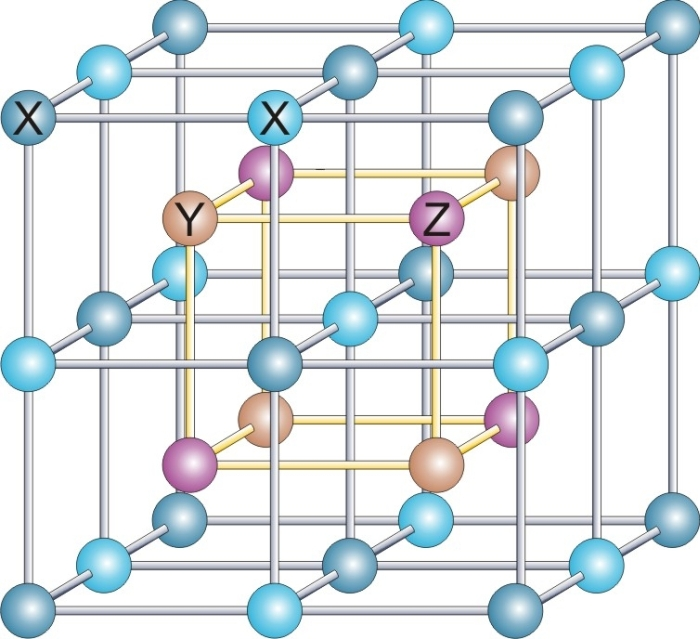|
Magneto-optic Kerr Effect
In physics the magneto-optic Kerr effect (MOKE) or the surface magneto-optic Kerr effect (SMOKE) is one of the magneto-optic effects. It describes the changes to light reflected from a magnetized surface. It is used in materials science research in devices such as the Kerr microscope, to investigate the magnetization structure of materials. Definition The magneto-optic Kerr effect relates light that is reflected from a magnetized surface and may change both polarization and reflected intensity. The magneto-optic Kerr effect is similar to the Faraday effect, which describes changes to light transmission through a magnetic material. In contrast, the magneto-optic Kerr effect describes changes to light reflected from a magnetic surface. Both effects result from the off-diagonal components of the dielectric tensor \varepsilon. These off-diagonal components give the magneto-optic material an anisotropic permittivity, meaning that its permittivity is different in different direct ... [...More Info...] [...Related Items...] OR: [Wikipedia] [Google] [Baidu] |
Physics
Physics is the natural science that studies matter, its fundamental constituents, its motion and behavior through space and time, and the related entities of energy and force. "Physical science is that department of knowledge which relates to the order of nature, or, in other words, to the regular succession of events." Physics is one of the most fundamental scientific disciplines, with its main goal being to understand how the universe behaves. "Physics is one of the most fundamental of the sciences. Scientists of all disciplines use the ideas of physics, including chemists who study the structure of molecules, paleontologists who try to reconstruct how dinosaurs walked, and climatologists who study how human activities affect the atmosphere and oceans. Physics is also the foundation of all engineering and technology. No engineer could design a flat-screen TV, an interplanetary spacecraft, or even a better mousetrap without first understanding the basic laws of physic ... [...More Info...] [...Related Items...] OR: [Wikipedia] [Google] [Baidu] |
Fresnel Amplitude
Augustin-Jean Fresnel (10 May 1788 – 14 July 1827) was a French civil engineer and physicist whose research in optics led to the almost unanimous acceptance of the wave theory of light, excluding any remnant of Newton's corpuscular theory, from the late 1830s until the end of the 19th century. He is perhaps better known for inventing the catadioptric (reflective/refractive) Fresnel lens and for pioneering the use of "stepped" lenses to extend the visibility of lighthouses, saving countless lives at sea. The simpler dioptric (purely refractive) stepped lens, first proposed by Count Buffon and independently reinvented by Fresnel, is used in screen magnifiers and in condenser lenses for overhead projectors. By expressing Huygens's principle of secondary waves and Young's principle of interference in quantitative terms, and supposing that simple colors consist of sinusoidal waves, Fresnel gave the first satisfactory explanation of diffraction by straight edges, including t ... [...More Info...] [...Related Items...] OR: [Wikipedia] [Google] [Baidu] |
Thin-film Optics
Thin-film optics is the branch of optics that deals with very thin structured layers of different materials. In order to exhibit thin-film optics, the thickness of the layers of material must be similar to the coherence length; for visible light it is most often observed between 200 and 1000 nm of thickness. Layers at this scale can have remarkable reflective properties due to light wave interference and the difference in refractive index between the layers, the air, and the substrate. These effects alter the way the optic reflects and transmits light. This effect, known as thin-film interference, is observable in soap bubbles and oil slicks. More general periodic structures, not limited to planar layers, exhibit structural coloration with more complex dependence on angle, and are known as photonic crystals. In manufacturing, thin film layers can be achieved through the deposition of one or more thin layers of material onto a substrate (usually glass). This is most oft ... [...More Info...] [...Related Items...] OR: [Wikipedia] [Google] [Baidu] |
Fresnel Equations
The Fresnel equations (or Fresnel coefficients) describe the reflection and transmission of light (or electromagnetic radiation in general) when incident on an interface between different optical media. They were deduced by Augustin-Jean Fresnel () who was the first to understand that light is a transverse wave, even though no one realized that the "vibrations" of the wave were electric and magnetic fields. For the first time, polarization could be understood quantitatively, as Fresnel's equations correctly predicted the differing behaviour of waves of the ''s'' and ''p'' polarizations incident upon a material interface. Overview When light strikes the interface between a medium with refractive index ''n''1 and a second medium with refractive index ''n''2, both reflection and refraction of the light may occur. The Fresnel equations give the ratio of the ''reflected'' wave's electric field to the incident wave's electric field, and the ratio of the ''transmitted'' wave's electri ... [...More Info...] [...Related Items...] OR: [Wikipedia] [Google] [Baidu] |
John Kerr (physicist)
John Kerr FRS (; 17 December 1824 – 15 August 1907) was a Scottish physicist and a pioneer in the field of electro-optics. He is best known for the discovery of what is now called the Kerr effect. Life and work John Kerr was born on 17 December 1824 at Ardrossan, Scotland. He was a student in Glasgow from 1841 to 1846, and at the Theological College of the Free Church of Scotland, in Edinburgh, in 1849. Starting in 1857 he was mathematical lecturer at the Free Church Training College in Glasgow. He died in Glasgow in 1907. Kerr's most important experimental work was the discovery of double refraction in solid and liquid dielectrics in an electrostatic field (1875) which is now known as Kerr effect. In the Kerr effect, difference between refractive index experienced by ordinary and extraordinary ray is proportional to the square of the electric field. Where the relationship is linear, the effect is known as the Pockels effect. Intense light from lasers allows the achievement ... [...More Info...] [...Related Items...] OR: [Wikipedia] [Google] [Baidu] |
Curie Temperature
In physics and materials science, the Curie temperature (''T''C), or Curie point, is the temperature above which certain materials lose their permanent magnetic properties, which can (in most cases) be replaced by induced magnetism. The Curie temperature is named after Pierre Curie, who showed that magnetism was lost at a critical temperature. The force of magnetism is determined by the magnetic moment, a dipole moment within an atom which originates from the angular momentum and spin of electrons. Materials have different structures of intrinsic magnetic moments that depend on temperature; the Curie temperature is the critical point at which a material's intrinsic magnetic moments change direction. Permanent magnetism is caused by the alignment of magnetic moments and induced magnetism is created when disordered magnetic moments are forced to align in an applied magnetic field. For example, the ordered magnetic moments (ferromagnetic, Figure 1) change and become disorder ... [...More Info...] [...Related Items...] OR: [Wikipedia] [Google] [Baidu] |
Magneto-optical Drive
A magneto-optical drive is a kind of optical disc drive capable of writing and rewriting data upon a magneto-optical disc. Both 130 mm (5.25 in) and 90 mm (3.5 in) form factors exist. In 1983, just a year after the introduction of the Compact Disc, Kees Schouhamer Immink and Joseph Braat presented the first experiments with erasable magneto-optical Compact Discs during the 73rd AES Convention in Eindhoven. The technology was introduced commercially in 1985. Although optical, they normally appear as hard disk drives to an operating system and can be formatted with any file system. Magneto-optical drives were common in some countries, such as Japan, but have fallen into disuse. Overview Early drives are 130 mm and have the size of full-height 130 mm hard-drives (like in the IBM PC XT). 130 mm media looks similar to a CD-ROM enclosed in an old-style caddy, while 90 mm media is about the size of a regular 3-inch floppy disk, but twice ... [...More Info...] [...Related Items...] OR: [Wikipedia] [Google] [Baidu] |
Polarizer
A polarizer or polariser is an optical filter that lets light waves of a specific polarization pass through while blocking light waves of other polarizations. It can filter a beam of light of undefined or mixed polarization into a beam of well-defined polarization, that is polarized light. The common types of polarizers are linear polarizers and circular polarizers. Polarizers are used in many optical techniques and instruments, and polarizing filters find applications in photography and LCD technology. Polarizers can also be made for other types of electromagnetic waves besides visible light, such as radio waves, microwaves, and X-rays. Linear polarizers ''Linear polarizers'' can be divided into two general categories: absorptive polarizers, where the unwanted polarization states are absorbed by the device, and beam-splitting polarizers, where the unpolarized beam is split into two beams with opposite polarization states. Polarizers which maintain the same axes of polar ... [...More Info...] [...Related Items...] OR: [Wikipedia] [Google] [Baidu] |
Setup Magneto-Optic-Kerr-Effect A
Setup (the noun) or set up (the verb) may refer to: Arts, entertainment, and media Films * ''Set Up'' (2005 film), a 2005 Hong Kong horror film * ''Setup'' (2011 film), a 2011 action thriller heist film Music * ''Setup'' (album), a 1994 album by jazz pianist Stanley Cowell *Setup (music) Sports *Racing setup, in auto racing *Setup pitcher Other uses *Setup (storytelling), the introduction in a plot of an element that will be useful to the story only later, when the payoff comes *Setup, also called frameup, providing false evidence or false testimony in order to falsely prove someone guilty of a crime *Setup, installation (computer programs) *Setup, power-on self-test *Setup, on page 104 of ''The_Black_Ice'', delivery of an alcoholic drink in a bar *Setup cost, the cost of a step in manufacturing changeover See also *Setting up to fail, a manipulative technique to engineer failure *Set (other) *Setting (other) Setting may refer to: * A location (geography) whe ... [...More Info...] [...Related Items...] OR: [Wikipedia] [Google] [Baidu] |
Heusler Alloy
Heusler compounds are magnetic intermetallics with face-centered cubic crystal structure and a composition of XYZ (half-Heuslers) or X2YZ (full-Heuslers), where X and Y are transition metals and Z is in the p-block. The term derives from the name of German mining engineer and chemist Friedrich Heusler, who studied such a compound (Cu2MnAl) in 1903. Many of these compounds exhibit properties relevant to spintronics, such as magnetoresistance, variations of the Hall effect, ferro-, antiferro-, and ferrimagnetism, half- and semimetallicity, semiconductivity with spin filter ability, superconductivity, topological band structure and are actively studied as Thermoelectric materials. Their magnetism results from a double-exchange mechanism between neighboring magnetic ions. Manganese, which sits at the body centers of the cubic structure, was the magnetic ion in the first Heusler compound discovered. (See the Bethe–Slater curve for details of why this happens.) Styles of writing ... [...More Info...] [...Related Items...] OR: [Wikipedia] [Google] [Baidu] |






